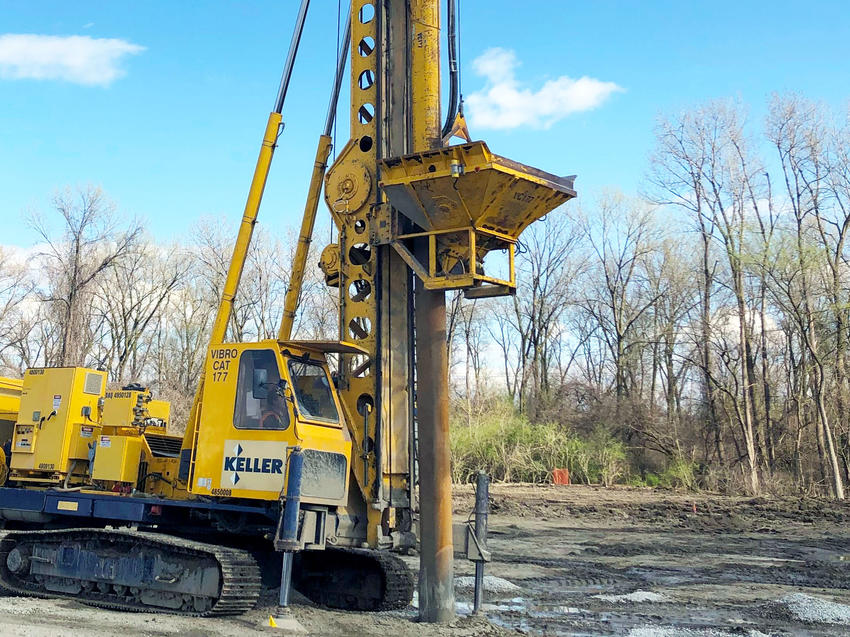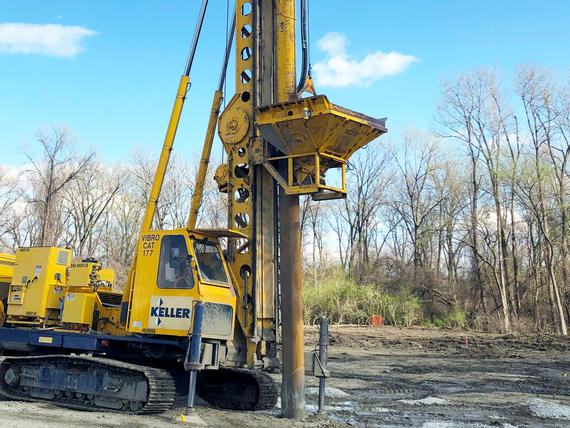The U.S. Environmental Protection Agency’s Long Term 2 Enhanced Surface Water Treatment Rule targets chlorine-resistant pathogens and microorganisms that feed water treatment plants in surface water sources. Illinois American Water (IAW) installed an ultraviolet (UV) disinfection system at its East St Louis water treatment plant to comply with EPA requirements.

The project
Installation of the UV disinfection system requires an expansion of approximately eight acres and construction of two precast concrete, 29,000 SF storage reservoirs, a transfer pump station, a high service pump station, and a chemical feed building. Site soils consist of soft or loose interbedded sand, silty sand, and clay over loose to medium dense sand transitioning to medium dense to dense sand.
The challenge
- Potential soil liquefaction due to location within the New Madrid Fault Zone.
- The reservoirs will be supported on shallow ring foundations with a thin, unreinforced (diaphragm) floor slab. Due to soil conditions, there was significant potential for unacceptable total and differential settlements of the structures.
The solution
The owner and geotechnical engineer wanted a ground improvement solution using vibro replacement stone columns and vibro compaction. Keller’s design/build proposal included installation, sequencing, and spacing for these techniques.
The bottom-feed stone columns were installed (using water flush methods) on a 10-ft primary rectangular spacing to a depth of 30-35 ft to provide settlement control and improve bearing capacity. A secondary, split-spaced pattern of shallow, bottom-feed VibroPiers® (vibro aggregate piers) was installed to refusal in the previously densified sand to provide the target stone column area replacement ratio, further enhancing settlement reduction and bearing capacity. Keller’s team also worked closely with the reservoir manufacturer to design and install a load transfer platform beneath the reservoirs to ensure the performance of the treatment areas.
A modulus test was performed to confirm design parameters. Following the project engineer’s recommended verification program, Keller performed cone penetrometer testing every 1600 SF. The CPT results indicated the soils met all project performance requirements.
